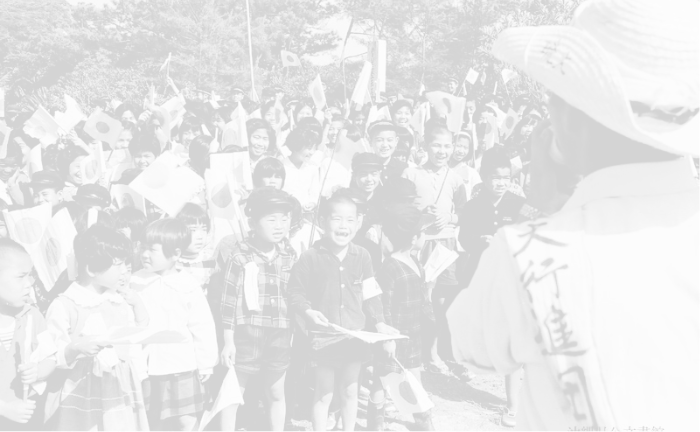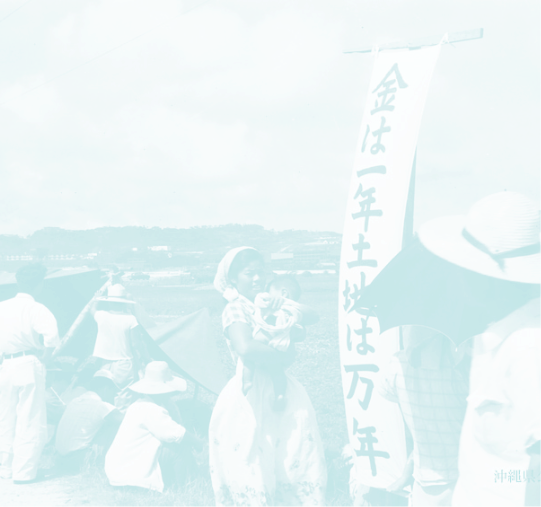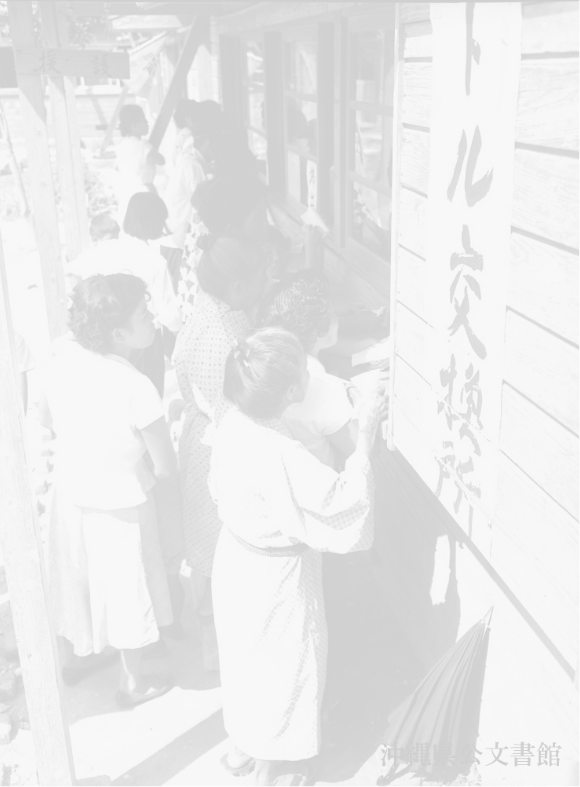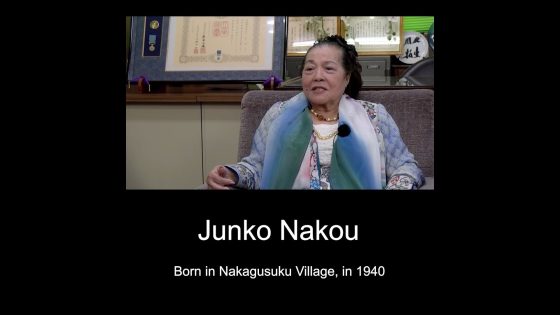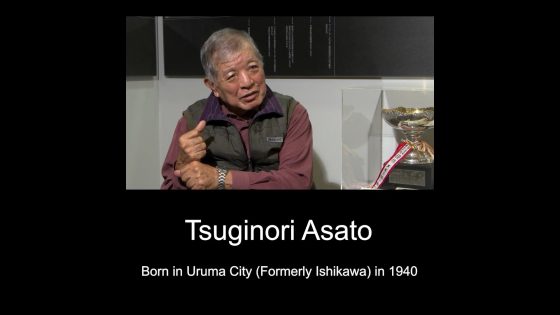
Memorials and Tourism in Postwar Okinawa
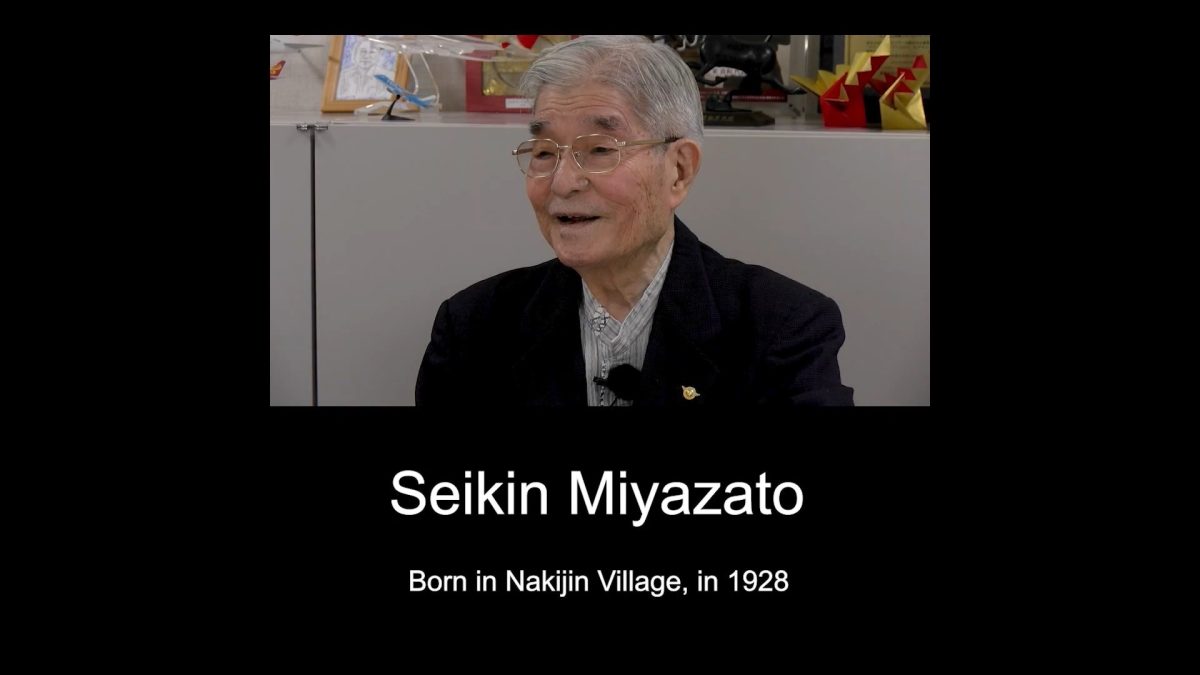

- Born in 1928
- Seikin Miyazato
Index
- Brief biography of the witness
- War experience in northern Okinawa main island
- Ishikawa area after the war and enrollment in Okinawa Foreign Language School
- Work that makes the most of English skills
- Okinawa's postwar travel industry and the reception of memorial groups
- Major initiatives after the establishment of Okinawa Tourist
Timeline
| 1928 |
Born in Koechi, Nakijin Village.
|
|
|---|---|---|
| 1945 |
Experienced the Battle of Okinawa in the northern part of the Okinawa main island when he was a third grade student at Okinawa Prefectural Third Junior High School.
|
|
| 1947 |
After graduating from Okinawa Foreign Language School, he worked for an American capital company.
|
|
| 1954 |
Joined the Okinawa Travel Agency at the invitation of his classmate at the Foreign Language School, Mr. Ryoukou Higashi.
|
|
| 1958 |
In October, participated in the establishment of Okinawa Tourist and became its general manager.
|
|
| 1959 |
Hosted a memorial service group from mainland Japan as its main business after establishing Okinawa Tourist.
|
|
| 1967 |
In September, the Japanese government began issuing passports to Okinawa residents. (The first passport was issued to Mr. Seiho Matsuoka, Chief Administrative Officer).
|
|
| 1972 |
Until the reversion of Okinawa to Japan, tourists, mainly memorial service groups dominated tourism in Okinawa, attracting about 200,000 visitors annually.
|
|
| 1994 |
Appointed president and representative director of Okinawa Tourist Service Inc.
|
|
| 2004 |
Appointed chairman and representative director of Okinawa Tourist Service Inc.
|
Story
Brief biography of the witness
One of the founding members of Okinawa Tourist Service Inc, a long-established travel agency company established under U.S. military rule.
He contributed to the development of tourism in Okinawa in the postwar period, including the start of regular air service to outlying islands, the acceptance of memorial service groups from the mainland Japan prior to Okinawa's return to Japan, the planning of bus services for tourists, overseas tours for Americans in Okinawa, and the approval of Okinawa's first car rental business.
War experience in northern Okinawa main island
Went to the Battlefield in a Student Corps
Before the US military landed, all of my classmates from Okinawa Prefectural Third Junior High School (now Nago High School) dispersed. And a joint group of the signal corps and the Udo unit in Motobu was formed. Among the third-year students, I was selected. Among first and second year, five students were selected. The Gokyotai (boy soldier corps) and us received spy training in Tanodake, Haneji. Captain Murakami was the leader of the Gokyotai, who had graduated from the Nakano Army School in Tokyo, where soldiers who graduated from the military academy received spy training. Captain Murakami was so smart that the Emperor gave him a sword. The six of us were taken to Tanodake and received spy training during the day. Other soldiers slept during the day and carried food supplies at night. I'm from Nakijin, so I was in charge of Nakijin and the Motobu Peninsula. I explored around Nakijin and the Motobu Peninsula to find out the movements of the US military and reported this to the Gokyotai. Once every four days, I gave my report to the Gokyotai at Tanodake.
Disbandment of the Gokyotai
The US military that had landed in Nago were moving towards Haneji, approaching Nakijin. I was unable to go to Tanodake to give my report due to the danger. Around that time, the Gokyotai was disbanded. The war was over and we were ordered to disband, to go home. So I was hiding in an air-raid shelter with my family. The air-raid shelters in Okinawa at that time were graves. There were graves at the top and bottom. When I climbed on top of a grave and watched the US military, US soldiers with a military dog came towards us with guns raised. When I went down and hid in the grave, they shot from above. After a while, a US soldier asked us to come out of the grave. When I came out, there were US soldiers there, and they took my family members and me to a POW camp in Haneji Village (now Nago City).
Escaped from POW Camp
I was taken to the POW camp in Taira in Haneji Village. We were forced to carry food and canned goods to the US military garrison there. Occasionally, my family members came to visit the camp. A wire fence was set up at the camp, and we spoke through the wire fence. I opened the bottom of the wire fence, took off my clothes, and snuck out from under the wire fence. I was hidden by everyone in the camp, so I went home with my mother. After the war ended, the US military was stationed at Nakijin Elementary School. It was close to our village. My sister and other women were scared of US soldiers, so they purposely put soot on their faces to avoid being raped by the soldiers.
Ishikawa area after the war and enrollment in Okinawa Foreign Language School
Ishikawa Area after the War
A town was built along the east coast on the way to Onna and Ginoza Village in Ishikawa. After the war, some people went back to their homes. But there was a camp, and some people couldn't go home. There was still fighting going on in the south. All those who could not return home lived in Ishikawa. Most of them were from the central/southern Naha area, living in a camp. Most of the food was rationed by the US military. Meanwhile, a military government was established in Enobi, and the Okinawa Advisory Council was established in Ishikawa. Members designated by the military government were brought from all over the island and they stayed at the central hotel in Ishikawa. A council meeting began using a private house requisitioned by the US military as accommodation. My uncle was the manager of a hotel there because he had work to do with the advisory council. In the beginning, members of the council lived in a house built by the US military in the 1st Ward, Group 5 in Ishikawa. In the meantime, when the world had calmed down a bit, Ishikawa High School was established. Mr. Shuhei Higa (later the head of the administration), who was the vice principal when I was a student at the Prefectural Third Junior High School encouraged me to go Ishikawa High School.
Entered Okinawa Foreign Language School’s Intensive Course
By the time I graduated from high school, the Okinawa Foreign Language School had been established. At that time, there was also the Okinawa Bunkyo School for teacher training. The first school was Okinawa Technical School (now Okinawa Technical High School), and Okinawa Bunkyo School opened in Gushikawa. After the opening of Bunkyo School, an intensive course was established at Okinawa Foreign Language School to train English teachers. When I graduated from Ishikawa High School, I took the exam for Okinawa Foreign Language School and fortunately, I passed and then enrolled. Ryoukou Higashi (a fellow founder of Okinawa Tourist) was also in the same intensive course. There were about 2 or 3 classes in the intensive course.
Work that makes the most of English skills
Worked as a Construction Site Interpreter
At that time, many construction companies were coming from the US to build US military bases. I had an interview and joined a civil engineering and construction company called A&J Company which has a branch in Futenma. I worked as an interpreter at a construction site. There were employees from Okinawa and employees from foreign countries at the site. I was hired as an on-site interpreter and stayed at the US military camp in Futenma. At that time, A&J had almost completed construction of the US military base, and many construction companies from Japan moved in instead. A&J was to be repatriated to the US, so I was worried that I would lose my job.
Joined a Taxi Company for US Soldiers and US Military Personnel
At that time, there was a taxi company called Shima Taxi, which was started by a man who was the manager of PX (an on-base store), offering taxi services to only soldiers and military personnel. I had an interview and was hired as a dispatcher because I could speak English. All the people who went to the mainland for university and other purposes before the war came back and, they were looking for work at taxi companies because there were no jobs. At that time, I was working in human resources at the taxi company. When the president at the time went to the DE (US Army Okinawa District Engineer Corps) in Camp Kuwae and asked someone there what the highest paying position was that Okinawans could hold, the answer was assistant manager. It was about 8, 000 yen paid with B yen (US military currency). My salary was about 2, 700 yen, and I was told, “Considering your position, your salary will be 8, 000 yen starting next month. “At that time, Chief Executive Shuhei Higa's salary was 6, 000 yen. So I got more than him.
Okinawa's postwar travel industry and the reception of memorial groups
Joined a Travel Agency (His Days at Okinawa Travel Agency)
At that time, Ryoukou Higashi was the sales manager of Okinawa Travel Agency. When Japan Airlines launched flights between Tokyo and Okinawa (Naha) in 1954, Okinawa Travel Agency was established to act as the exclusive agent for Japan Airlines. When the world calmed down, I joined Okinawa Travel Agency because I heard that the travel industry would be a very promising business. There, I handled airport check-in operations by myself. At first, immigration procedures were conducted at the Japan Airlines office at Naha Airport in a Quonset hut (US military barracks). Customers from the mainland also started coming little by little. At that time, you could not enter Okinawa without permission from the US Civil Government. So travelers from the mainland applied to travel to Okinawa through travel agencies such as the Japan Travel Bureau (JTB), Kinki Nippon Tourist, or Nippon Travel. I had to send documents to the US Civil Government for the applications.
Hosted a Memorial Service Group (After Founding Okinawa Tourist)
We filled out the applications, submitted the documents to the US Civil Government, received permission, and the travelers entered Okinawa. There were also documents that my company prepared and submitted. JTB sometimes prepared the documents themselves and sent the applications directly to the civil government. In that case, Okinawa Tourist was stated as the contact. Then I would get a call from the civil government. I was asked who the applicant was and for what purpose they were coming. “They are coming to commemorate the souls of their relatives or brothers who passed away in Okinawa “So I explained it like that. If the civil government approved, they received permission, and they came to Okinawa from the mainland.
Memorial Services for the War Dead
At that time, there was nothing called tourism. It was still under the US administration. The purpose of coming to Okinawa from the mainland was to commemorate the war dead. 200, 000 people died in the Battle of Okinawa. There were especially many divisions from Asahikawa in Hokkaido. Many people from Hokkaido came to Okinawa as soldiers. As for the procedures for traveling to Okinawa, Okinawa Tourist gradually became the underwriter and submitted all the applications as a guarantor. Eventually, it became troublesome for JTB to handle the application procedures themselves, so they relied on Okinawa Tourist for all the application procedures. We therefore took care of everything and sent out the documents. Each time, we were called by the civil government. At first, the president, Ryoukou Higashi, was called. As the number of calls from the civil government increased, I took over the rest and went to the civil government.
Means of Transportation at that Time
Most of the tourists came by a ship. At that time, plane tickets cost $84 each way to Tokyo. A round trip from Tokyo to Okinawa was $151. 20. It was so expensive that many people couldn’t pay it with their salary. So, airplane users were people such as company executives who traveled at their company's expense.
Air Routes to Remote Islands
At that time, there were no planes flying from the main island of Okinawa to Miyako or Yaeyama. If we wanted to fly a plane from the main island of Okinawa to Miyako or Yaeyama, we would have no choice but to rent a plane from a company in Okinawa and fly there. That's why we rented a China Airlines plane to go to Taiwan. At that time, China Airlines was flying the Iwakuni-Naha-Taiwan route. There was a company called Air America in Taiwan. It was a company that was stationed in China by the US Air Force to assist Chiang Kai-shek's army during the war on the Chinese mainland. There was an officer named Chennault, Claire Lee whose unit was transporting aid supplies to Chiang Kai-shek's army by plane. He moved to Taiwan with Chiang Kai-shek after China's Communist Civil War, and created an airline called CAT (later Air America). We were planning to charter a plane from that airline, and the flights ran smoothly, like scheduled flights. The same was true for flights to Miyako and Ishigaki.
Before Okinawa's return to Japan, the US Civil Government was considering bringing in Air America and Hawaiian Airlines as airlines to serve Okinawa. But if Okinawa was to return to Japan, it would be inconvenient if we didn't include Japan Airlines, so Air America left Okinawa. After that, Japan Airlines began operating. The joint venture between Japan Airlines and a local company was named Southwest Airlines Co., Ltd., and it became the current JTA (Japan Transocean Air).
Major initiatives after the establishment of Okinawa Tourist
Major Initiatives after the Establishment of Okinawa Tourist
After setting up a travel agency for Americans in Okinawa, this was the business that was started. Memorial groups from the mainland received permission from the US government to enter Okinawa and traveled from place to place such as the southern battlefields for memorial services. Genteru Nakamura of our company got acquainted with Kaname Imai, a former officer in the Japanese army, providing us with information such as which units fought where and who died where. Genteru Nakamura received information from Mr. Imai and was guiding people coming from the mainland for memorial services. Back then, there were no dedicated sightseeing buses. We rented a local bus and went around the southern battlefield sites. We also started to learn about the places where family members and relatives of the memorial group died. Based on Mr. Imai’s detailed information, Genteru Nakamura guided the memorial groups. When memorial groups started coming again and again, because graves of the war dead had not even been built, a memorial tower was created for each prefecture. A memorial tower was built at the place where the most people died in the war. I think there are quite a number of memorial towers built under the care of Gentaro Nakamura. At that time, I was in charge of the foreign travel department and worked with foreigners at the Plaza House office for about 15 years.
Travel Tours for US Military
The US Marines stationed at the foot of Mt. Fuji moved to Okinawa, and the army entered the residential area of Awase in Okinawa City. Then the US government contacted us and asked us to share information about Okinawa with US soldiers through sightseeing in Okinawa. So Ryoukou Higashi and I arranged a bus and guided the Marines around the island. Ryoukou Higashi and I wrote a script about Okinawa's history, customs and education, and translated it into English and read it out loud. At first, I had never been an English-speaking guide before, so I was nervous and didn't speak much. As I continued, I got used to it and eventually I was able to tell jokes. That was the beginning of Okinawa tourism for Marines.We also provided sightseeing within the prefecture for school teachers on the base. We received requests from the school on the base. We handled overseas travel for base school teachers the most. Since I had a relationship with the Kadena Officers' Women's Club, they asked me to arrange their overseas trip. The travel-related committee chairperson of the Kadena Officers' Women's Club was the commander's wife. I talked with her and the committee chairperson and listened to their wishes about where they wanted to go and what they wanted to do, and then I drew up an itinerary. I was in charge of all overseas trips for the Officers' Club.
Operation of Sightseeing Buses and the Beginning of Rental Cars
Our company was a travel agency, so we didn't have a bus. So at first we rented local buses, but eventually we rented buses from a bus company and started operating a bus called the Okinawa Gray Line, which was exclusively for tourists. It was a sightseeing bus with Japanese and English guides on board. When Ryoukou Higashi was president of the Junior Chamber, he went on a field trip to Latin America. After seeing that car rentals were widely used in the US and Latin America, he applied to operate a rental car business, saying that he would start a business in Okinawa where cars come to the airport and wait for tourists when they arrive. Then the Ryukyu government told us that we could not operate the bus called Gray Line, because we were not a bus company. Permission for rental cars was granted with the condition that if the bus service was to be discontinued, rental cars would be allowed. At first, we started a rental car service by renting about 15 used cars.
Travel Procedures from Okinawa to the Mainland
Travel from Okinawa to the mainland required a Japan Travel Certificate issued by the US High Commissioner for the Government of the United States. After completing that procedure, people were able to go to the mainland. We couldn't go freely. We submitted all travel applications and received permission from the US Civil Government. We applied through the Southern Liaison Office in Yogi, Naha City. I went frequently back and forth to the Southern Liaison Office, and became friends with Mr. Arima in the office. As Okinawa's return to Japan approached, Mr. Arima asked me, “Who should be the first?” to be issued a Japanese passport in Okinawa. I answered it should be Seiho Matsuoka, the chief administrative officer. Afterwards, Chief Matsuoka received the first passport. As long as people had a Japan Travel Certificate, even Okinawans could go anywhere freely. This was authorized by the High Commissioner and was not a Japanese government passport. The Travel Certificate was not a passport issued by the Japanese government. Therefore, if people wanted to go abroad, people could not use it and needed a visa.
From Memorial Tours to Shopping Tours
Tourism in postwar Okinawa first began with the visit of memorial groups to Okinawa, and a memorial service was held in Okinawa every year, and memorial towers were also built. Then, work related to memorial groups gradually disappeared. After that, the purpose of sightseeing changed to shopping. At that time, before Okinawa had returned to Japan, many American products were being sold, so shopping tours increased. In the meantime, the Okinawa International Ocean Exposition was held. Okinawa was returned to Japan in 1972. The Ocean Expo was held in 1975, 3 years after the return. And after the Ocean Exploit was mostly memorial tours and shopping tours. Not many people wanted to travel for fun because it was still considered a luxury.
